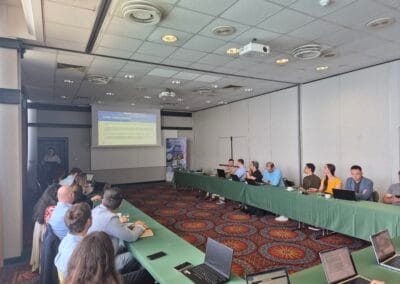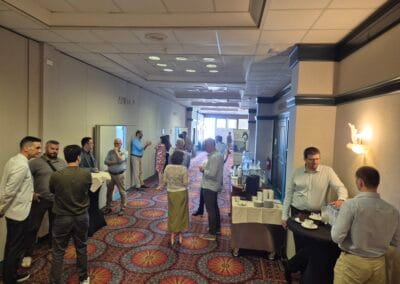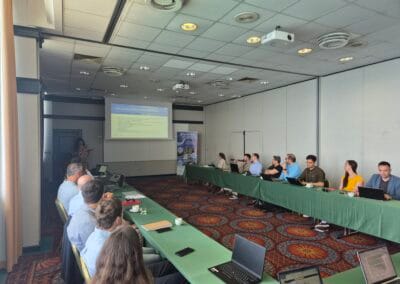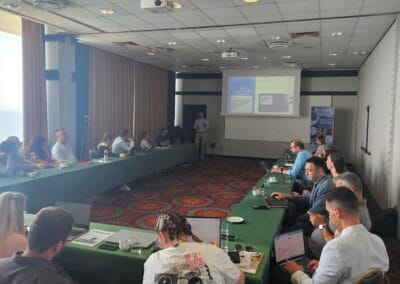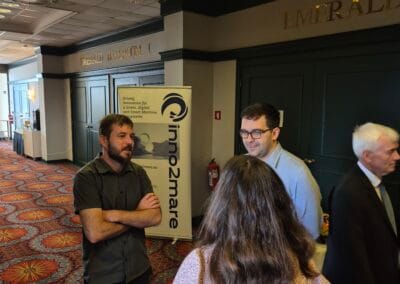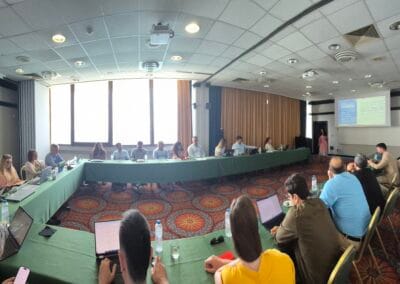Portorož, June 11, 2025 — The INNO2MARE consortium convened in Portorož for a meeting focused on assessing progress, aligning strategies, and strengthening collaboration across the project. With the second reporting period nearing its end, the gathering marked a strategic milestone in advancing maritime innovation in Slovenia and Croatia.
The meeting began with a review of project coordination and management, highlighting the importance of internal communication and timely reporting. The coordination team emphasized the need for more structured collaboration and consensus-building among all involved teams.
The ecosystem strategy team presented an updated approach, shaped by stakeholder feedback from Croatia and Slovenia. The refined strategy aligns ecosystem development with the Quadruple Helix model and defines long-term goals that complement broader European initiatives—laying the groundwork for sustainable innovation beyond the project’s conclusion.
Progress across the project’s core technical activities was also reviewed. Pilot projects are approaching completion, while technology development, implementation, and integration continue to advance. The team responsible for innovation capacity-building reported steady progress through workshops and public engagement. Increased collaboration is helping close remaining gaps and ensure all efforts remain aligned.
The consortium also reflected on progress in promoting gender equality. Notable outcomes include increased female representation on the Innovation Council and ongoing efforts to monitor gender balance across events and institutions.
Scaling Innovation and Preparing for Impact
Several pilot projects showcased advanced developments in AI-driven energy management, digital twins, and autonomous maritime systems. These include predictive neural networks, dynamic human-machine interfaces, and sea-state estimation using computer vision—some of which have already led to publications in top-tier journals.
The focus now shifts toward sustainability and real-world implementation. The project team presented a post-project action plan and monitoring framework, along with tailored roadmaps for scaling pilot technologies. Discussions emphasized the importance of establishing a long-term governance structure, with the Innovation Council proposed as a body to sustain momentum and drive future impact.
Engagement activities continue to thrive. Over 900 people have participated in public events, and more than 300 have received training in entrepreneurship. The Bootcamp IT program is equipping junior developers with in-demand skills, while the Career Connector platform is gaining visibility as a bridge between students and industry.
The communication and exploitation team outlined a comprehensive strategy to extend the project’s reach—focusing on digital outreach, scientific dissemination, and innovation events. Plans to commercialize key results are being aligned with broader EU strategic priorities.
As the project enters its final phase, the consortium is focused on completing deliverables, preparing for a virtual demonstration event in September 2025, and securing long-term impact through strategic governance and funding pathways.
The day concluded with a networking walk to Piran—a fitting end to a productive meeting that celebrated both progress and partnership.


